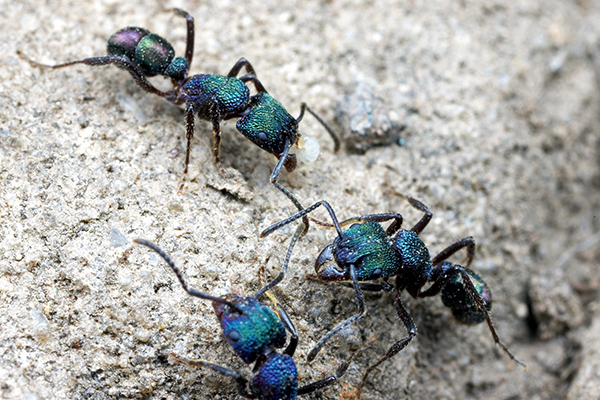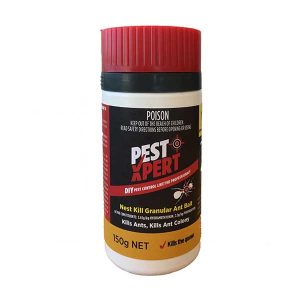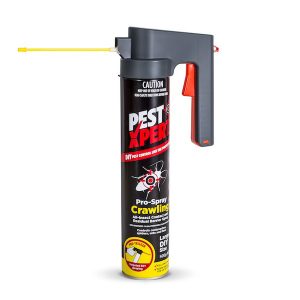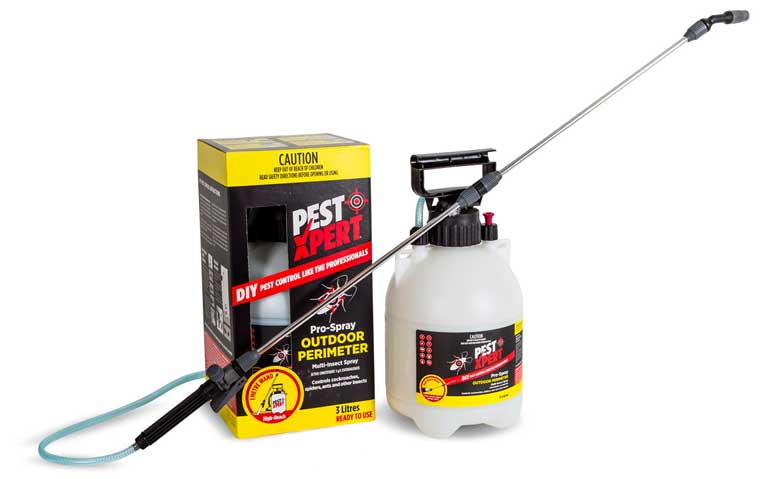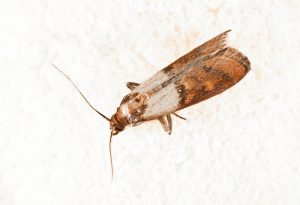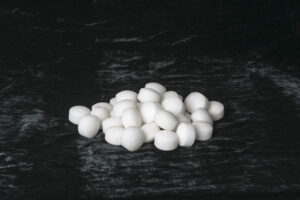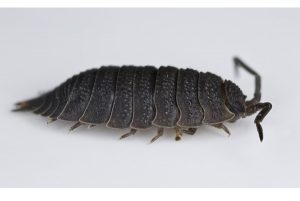
Tips to control an ant infestation
Most homeowners struggle to get rid of ants……. and it’s not easy, even for professional pest controllers! To get lasting control of ants you need to kill the whole nest, particularly targeting the queen(s). To do this successfully you need to be able to identify the species, understand their colony structure and foraging behaviour and then know which products to use and how to use them. So here’s a crash course to help you on your way…
Ant identification
With thousands of ant species present in Australia, identifying a particular species is normally a job for experts. Here are the most common problem ants found around homes and how to identify them
Indoor ants
Black House ant
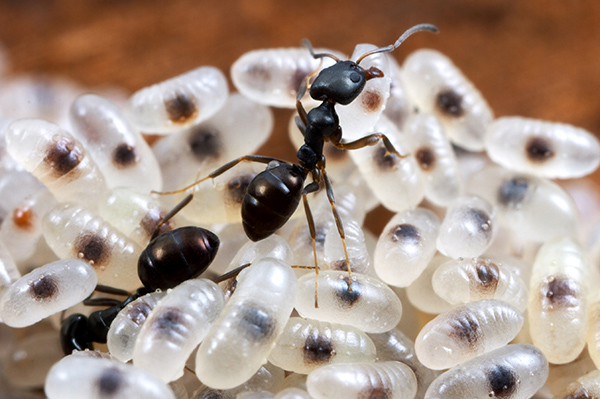
Nest location: Nest inside and outside. Particularly like wall voids and roof cavities under insulation
Behaviour: Can develop long trails
Food preference: Sugar
Recommended control products: Sugar based ant bait for nest treatment if nest cannot be located, powder treatment if nest can be located.
White footed house ant
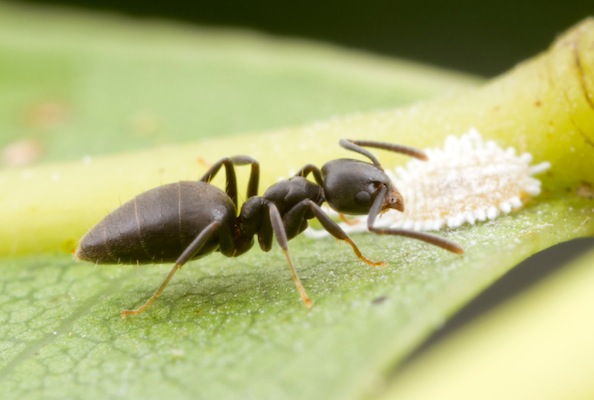
Nest location: Nest inside and outside. Particularly like kitchens and bathrooms
Behaviour: Can develop long multi-lane trails on exterior walls
Food preference: Sugar
Recommended control products: This species often has multiple nests and multiple queens and is very difficult to control. Try and locate all nests and treat with sugar based baits or directly with insecticide powder. Spray outside walls where the ants are trailing.
Indoor / Outdoor ants
Argentine ant
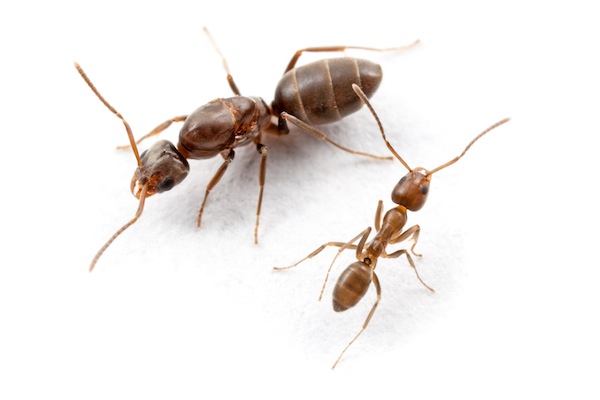
Nest location: Nests around the perimeter of the house in garden beds and under sheeting – very shallow nests.
Behaviour: Can dominate whole areas, creating a super colony that can grow to many kilometres! These live outside but sometime come inside looking for food.
Food preference: Sugar in cooler months, protein in Spring / Summer
Recommended control products: Due to the massive size of the colonies, spraying the nests directly provides the best results. But this needs to be repeated regularly to keep the numbers down.
Outdoor Ants
Big-headed ant
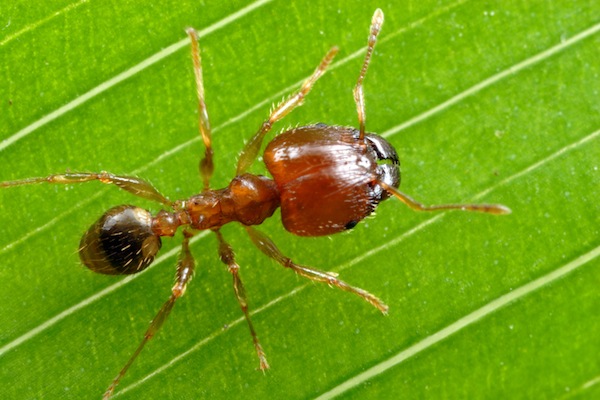
Nest location: Outside in lawns and under pavers.
Behaviour: Can form multiple nest colonies, do a lot of excavating
Food preference: Protein / Oil
Recommended control products: Nests can be treated with granular baits. Excavation areas can be treated with an insecticide spray or granule / sand.
Tyrant ant
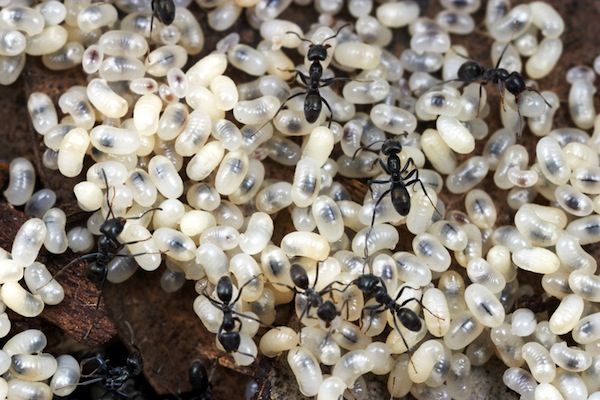
Nest location: Outside in lawns and paved areas.
Behaviour: Fast moving. Aggressive with mild sting
Food preference: Sugar and protein
Recommended control products: Nest can be treated with granular ant baits. In areas where they may be causing a problem with pavers use an insecticide spray or granule / sand.
Green headed ant
Nest location: Outside in lawns and garden beds.
Behaviour: Aggressive with painful sting.
Food preference: Protein
Recommended control products: Treat nests with granular ant baits.
What ant control products should you use?
To get rid of ant infestations and provide lasting protection, typically a combination of products needs to be used. Often, due to the number of nests / large ant numbers, repeat applications may be necessary.
You don’t just want to kill ants, you need to kill the nest…
To get lasting control, you need to kill the nest. There are three potential products that can be used for nest control; baits, sprays and powders
Ant Baits
Ant baits are the smart way to achieve nest control. Ant baits consist of a food attractive to the ants and a slow acting insecticide. The ants take the bait back to the nest where it is fed to their nest mates including the queen. The food is passed around the nest before the insecticide starts to have its effect and the colony is doomed.
There are two key challenges when using ant baits. Firstly, the bait needs to be attractive to the ants – with different ant species having different food preferences and often changing their preferences through the year, choosing the right ant bait can be a challenge. Secondly, it is important to make sure you apply enough ant bait to control the colony – the bigger the nest, the more bait that is required.
Generally speaking, ants can be split into sugar feeders, protein feeders and oil / fat feeders. Whilst it is not always the case, often the black ants (especially those found in houses) tend to have a sugar preference and the brown ants (especially those found outside) tend to have a protein / oil preference.
Sugar based ant baits for homeowners either come as a liquid (eg.Ant Rid) or as a solid bait in a bait station (eg.Mortein ant baits). These baits should be placed near the ant foraging trails and replenished as long as the ants continue to forage. (Place the liquids in a dish or sheet of aluminium foil). Ant numbers should drop off in 2-3 days and nest control should be achieved in around a week. However, although they may deliver a temporary drop in ant numbers, some of the liquid products are not always effective at delivering nest kill. Unfortunately some of the best sugar based ant baits (ant gels) are only available to professional pest controllers, but this may change in the future.
For outdoor ant species, use of a granular ant bait applied to trails or nests, or indeed over the infested area, can deliver great colony control. Again, it is a question of choosing a bait that is attractive to the species present. Fortunately, the new PestXpert Nest Kill ant bait contains two different types of food granules to appeal to a wider range of species. Treatment should deliver a drop in ant numbers in 2-3 days with colony control in 1-2 weeks. Large nests may require a supplementary treatment.
Ant sprays and powders
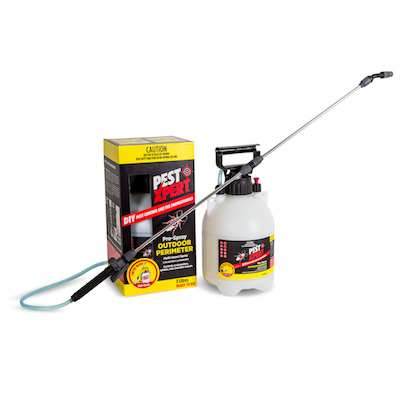
To treat an ant nest directly, the first challenge is to try and find the nest. Do this by following the ant trails. If you can see the ants carrying food, they will be going back to the nest, so those will be the ones to follow. Outdoor nests can be treated with a liquid insecticide.
To treat the nest with an insecticide spray, you need a product with a sturdy spray wand that allows you to inject the insecticide into the nest – PestXpert Outdoor Perimeter with its 1m spray wand is ideal. However, as it is not possible to know the internal nest structure, when you “inject” insecticide into the nest, you need to try and “flood” the nest so maximise the chances of success.
Powders can be useful if the nest is located inside – in the roof or wall void. Blow powder into the nest, ideally from a couple of different angles. Certainly in areas where electrical issues may be a concern, powders are the product of choice.
To keep ants out of the house
Spraying around the perimeter of the house (1m up the wall and 1m out) and around doors, windows and other entry points can help keep ants out. Some of these treatments may have a short term repellent effect, but their main mode of action is to kill ants that walk across the treated surface. If there are large numbers of ants or the treated surface is exposed to sun and rain, then the treatment may not last long. This is why sprays should be used in conjunction with baits to kill the nest.
To keep ants out of pavers
Ants build their nests under the pavers of paths and driveways…. the piles of sand and dirt are their excavations. Applying a long lasting insecticide to the cracks and crevices will kill any ants present and prevent the ants returning for several months. A professional liquid spray such as PestXpert Pro-Spray Outdoor is ideal for this job. Although this treatment will kill ants on contact, it does not normally kill the nest and often the ants may move elsewhere. The treatment acts more like a repellent, keeping the ants out of the paved area. The repellent effect wears off over time and so re-treatment will be necessary every 2-3 months to keep the area clear of ants.
To keep ants out of the lawn
Granular baits (such as PestXpert Nest Kill ant bait) should be the first course of action, especially for species such as the Green-headed ant, as it actually kills the nest. However, the use of ant granules or ant sand sprinkled over the infested lawn can also have an impact in reducing ant numbers as they contact the treatment. However, excluding all ants completely from a lawn is impossible, as sooner or later they will move in from neighbouring areas.
IMPORTANT NOTE: Granular ANT BAITS are not the same as insecticide granules (or sand). Baits contain food and are taken back to the nest – they are designed to kill the whole colony / nest. Insecticide granules are a contact insecticide, killing insects when they come into contact with the granules – they are designed to exclude insects from a particular area, they are unlikely to kill the nest.
It’s an ongoing battle…
Whilst dealing with a nest inside the home is typically a one-off event and you normally get long lasting results, dealing with ants outside the home can be an ongoing battle. Even if you get good levels of control, it is only a matter of time before new ants can move in from next door (something you can blame the neighbours for!). As such lasting ant control often requires regular treatments throughout the year…. and a lot of persistence!
For more details on how to get rid of ants, check out our main ant information page
PestXpert have a range of ant control products
- For nest control of outdoor ant species use PestXpert Nest Kill Ant Bait by sprinkling the bait over the areas where ants are active.
- For spot treatments and for lasting protection in cupboards the Pro-Spray Crawling aerosol with its extendable nozzle does a great job.
- For outdoor treatments and injection into nests, Pro-Spray Outdoor Perimeter has the 1m spray wand for safe application.

